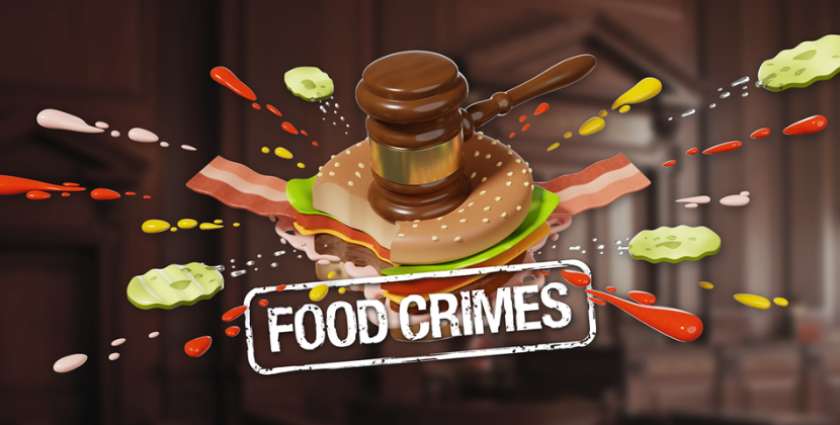
All Rise! The Honorable Judge Foodie, presiding. Food Court is now in session.
Wait – Food Court? As in, the place you pay entirely too much for a slice of stale pizza at the mall?
Not quite. A Food Court resolves, adjudicates, and enforces Food Crimes. So, what’s a Food Crime, you might ask? Time for a quick history lesson.
On July 5, 1776, well before our Founding Fathers even considered what to do with their newfound independence, the Articles of Confooderation were adopted and ratified in Peach Bottom, Pennsylvania, just a short trip from Philadelphia. To this day, the Articles of Confooderation govern any and all food-related rights and privileges. Pursuant to Article I, Section B of the Articles of Confooderation,
A food crime is defined as “a prohibited act that impacts the food or eating experience of another, for which someone can be tried and convicted in Food Court.”
Soon after ratification, the landmark Supreme Court decision in Marmalade v. Mayonnaise established the principle of “foodicial review,” and determined that Food Courts could lawfully preside over all food-related disputes, and otherwise enforce Food Crimes to the maximum extent provided by the Articles of Confooderation.

Okay, thanks for the lesson I guess, but I still don’t really know what a Food Crime is. How about you give us some examples.
Oh, right. Great idea! Food Criminal Law Section 202 (a.k.a. “Food Theft”) is perhaps the most commonly violated Food Crime. As its name suggests, Food Theft occurs “when an individual, with intent to deprive another of their food, wrongfully takes, obtains or withholds such food from the owner thereof.” Ever snag one of your kid’s chicken nuggets when they’re not looking? If so, you’ve violated Food Criminal Law Section 202, and are technically a “foodgitive.” Something to think about….
Almost as common, but much harder to enforce, is Food Criminal Law Section 144 (a.k.a. “Food Evasion”). Food Evasion occurs when “any person willfully attempts in any manner to evade or defeat the consumption of any food, as imposed by a parent or lawful guardian.” Do you suspect that your kid might be smuggling broccoli to the dog under the table at dinner? Might want to open an investigation and bring it to the Food Court’s attention. Did I forget to mention that parents can bring claims in Food Court too?
Food Criminal Law Section 506 (a.k.a Food Conspiracy) may be the most serious Food Crime of all. A person is guilty of Food Conspiracy when “with intent to engage in conduct constituting a Food Crime, he or she agrees with one or more other persons to engage in or cause the performance of such Food Crime.” Have two of your kids ever conspired to steal the youngest’s Halloween candy? Wait, actually, don’t answer that. I don’t want to be implicated. Just know it’s a serious offense and you might want to call a Food Lawyer (I know a guy).
Other food related misdemeanors include:
- Putting the empty box back in the pantry
- Leaving the milk out for too long
- Burning the coffee
- Sneaking healthy food into delicious food
Now that I know what a Food Crime is, how do I get justice?
If you think a Food Crime was committed against you or if you have witnessed a Food Crime, you must report wrong-doings by using the only tip line qualified to handle these crimes.
Of course, you can also hear cases brought in front of the Food Court in Pinna Original podcast, Food Crimes! Justice must be served - preferably with ketchup!
We’re all ears!
Share your stories with us! Find us on all our social platforms – Facebook, Instagram, Twitter, and Pinterest – or email us at contact@pinna.fm.

 Pinna staff
Pinna staff